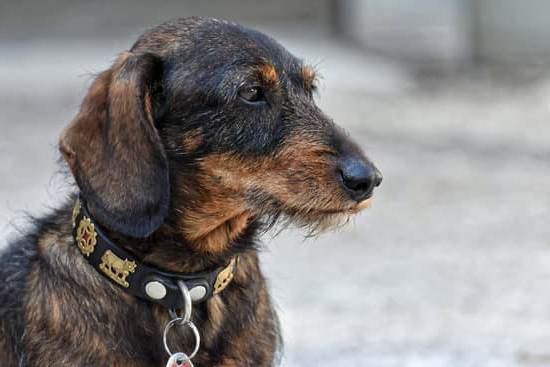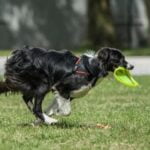Is your dog wreaking havoc on your furniture with their biting habits? In this article, we will explore the common problem of dogs biting furniture and provide valuable insights on how to train them to stop. If you’re wondering how to train a dog to not bite furniture, you’re in the right place. It’s important to understand the root cause of this behavior before implementing any training strategies.
There are various reasons why dogs engage in destructive biting behavior towards furniture, and it’s crucial to address these underlying issues in order to effectively train them. By creating a safe and engaging environment for your furry friend, providing alternatives to furniture, and using consistent training techniques with positive reinforcement, you can set your dog up for success in breaking this destructive habit.
In the following sections, we will discuss essential tools and toys for training your dog not to bite furniture, the power of redirection and distraction techniques, establishing boundaries and rules for your dog, addressing any underlying behavioral issues, and knowing when it may be necessary to seek professional help from a dog trainer or behaviorist. With patience and commitment, you can celebrate progress while staying dedicated to the training process.
Creating a Safe and Engaging Environment for Your Dog
Providing an engaging environment for your dog is crucial in preventing them from biting furniture. By understanding what drives their behavior, you can create a safe space that encourages positive habits.
Understanding Your Dog’s Needs
It’s important to recognize that dogs have natural instincts and needs that must be satisfied. Biting furniture may be a sign of boredom, anxiety, or the need for mental stimulation. Understanding these underlying reasons can help in addressing the root cause of the behavior.
Choosing the Right Toys and Accessories
To prevent your dog from biting furniture, provide them with a variety of toys and accessories to keep them occupied. Puzzle toys, chew toys, and interactive games can help redirect their attention away from the furniture. Consider rotating these items regularly to keep your dog interested and engaged.
Creating Designated Areas
Designate specific areas in your home where your dog is allowed to play and relax. This can include a comfortable bed, playpen, or area with their toys. By providing them with their own space, you can encourage positive behavior while reducing the temptation to gnaw on furniture.
By creating a safe and engaging environment for your dog and providing alternatives to furniture, you can effectively train them not to bite on household items. Incorporating these strategies alongside consistent training and positive reinforcement will encourage desired behaviors while ensuring a happy and healthy life for your furry friend.
Importance of Consistent Training and Positive Reinforcement
Consistency is key when it comes to training your dog not to bite furniture. Dogs thrive on routine, so it’s important to be consistent in your training methods and expectations. Positive reinforcement is also crucial in this process, as it helps to encourage good behavior and discourage unwanted behaviors.
Understanding the Role of Consistency
Consistency in training means that everyone in the household is on the same page when it comes to enforcing rules and boundaries for the dog. If one person allows the dog on the couch while another does not, it can confuse the dog and make training less effective. Consistency also means reinforcing the same commands and expectations every time, so your dog knows what is expected of them.
The Power of Positive Reinforcement
Positive reinforcement involves rewarding your dog for good behavior with treats, praise, or toys. When your dog chooses to chew on a toy instead of the furniture, make sure to reward them with verbal praise or a special treat. This positive association helps your dog understand that choosing the appropriate alternative is desirable and will result in a positive outcome.
Training Techniques for Preventing Furniture Biting
To train your dog not to bite furniture, use positive reinforcement techniques such as clicker training or using a marker word like “yes” to signal when they have made the right choice. Pair this with redirecting their attention away from the furniture onto a more appropriate chew toy or bone. Consistently reinforcing these actions will help your dog learn what behaviors are acceptable and become less likely to engage in destructive chewing behaviors.
By understanding how consistency and positive reinforcement play a crucial role in training dogs not to bite furniture, you can effectively address this common issue with patience and dedication.
Essential Tools and Toys for Training Your Dog Not to Bite Furniture
When it comes to training your dog not to bite furniture, having the right tools and toys can make a significant difference in the success of your efforts. Here are some essential items that can help you in effectively teaching your dog appropriate behaviors:
- Chew Toys: Providing your dog with a variety of chew toys can redirect their attention away from furniture and onto something more appropriate. Look for durable, safe chew toys that will keep your dog entertained and satisfied.
- Treat Dispensing Toys: These toys are not only great for keeping your dog occupied, but they also provide mental stimulation and reward positive behavior. Fill these toys with treats and let your dog figure out how to release them, keeping their mind and mouth busy.
- Bitter Sprays or Repellents: Consider using bitter sprays or repellents on the furniture to deter your dog from biting or chewing on it. These products have a taste that most dogs find unpleasant, which can discourage them from engaging in the behavior.
In addition to these items, consider incorporating interactive puzzle toys, ropes for tugging, and interactive games that keep your dog physically active and mentally engaged. By providing an array of engaging alternatives, you can help fulfill your dog’s natural need to chew and play while protecting your furniture from damage.
Remember, consistency is key when using these tools and toys as part of your training plan. It’s important to reinforce positive behavior by rewarding your dog whenever they choose to engage with the provided alternatives rather than the furniture itself. This positive reinforcement will help teach your dog what behaviors are acceptable while building a strong bond between you and your pet.
Ultimately, with the right tools and consistent training using positive reinforcement methods, you can successfully train your dog not to bite furniture.
The Power of Redirection and Distraction Techniques
When it comes to training your dog not to bite furniture, redirection and distraction techniques can be incredibly effective. Instead of simply scolding your dog for biting the furniture, it’s important to provide them with an alternative behavior to focus on. One way to do this is by offering a variety of interactive toys and chews that will keep your dog engaged and entertained.
A great technique for redirecting your dog’s attention away from the furniture is through the use of food puzzles or treat-dispensing toys. These toys not only provide mental stimulation for your dog but also encourage them to use their energy in a positive way. By keeping your dog physically and mentally stimulated, they are less likely to resort to destructive behaviors such as biting the furniture.
In addition to using toys and puzzles, another effective distraction technique is engaging your dog in play or training sessions. Teaching your dog new commands or tricks not only redirects their energy but also strengthens the bond between you and your pet. By actively engaging with your dog in a positive manner, you are reinforcing good behavior and effectively discouraging them from biting the furniture.
| Redirection Techniques | Destruction Behaviors |
|---|---|
| Provide alternative behaviors for dogs | Biting the furniture |
| Use interactive toys and chews for engagement | Resorting to destructive behaviors |
| Engage in play or training sessions | Strengthening bond between owner and pet |
Establishing Boundaries and Rules for Your Dog
When it comes to training your dog to not bite furniture, one of the most important steps is to establish clear boundaries and rules. Dogs thrive on structure, so it’s essential to set up guidelines for behavior in the home. Here are some key ways to establish boundaries and rules for your dog:
- Consistency is key: Set consistent rules and stick to them. If you allow your dog on the furniture sometimes but not others, it can be confusing for them.
- Use positive reinforcement: When your dog follows the rules and avoids biting the furniture, be sure to reward them with praise, treats, or their favorite toys. Positive reinforcement helps reinforce good behavior.
- Provide proper training: Take the time to train your dog on basic commands such as “leave it” or “off.” This will give them clear direction on what behaviors are acceptable.
Understanding these principles of boundary setting can help create a harmonious environment for both you and your furry friend.
In addition to setting boundaries and rules within the home, it’s also important to establish boundaries when it comes to playtime and interaction with your dog. Teaching them appropriate play behavior can prevent potential furniture biting out of excitement or frustration. By establishing clear boundaries during playtime, you can help encourage positive behavior and reduce the likelihood of destructive habits. Remember that consistency is crucial in implementing these rules effectively.
By effectively establishing boundaries and rules for your dog, you can create a supportive environment that promotes positive behavior while reducing furniture biting tendencies. It’s important to remember that each dog is unique, so finding the right approach that works for your furry companion may take time and patience. But with consistent training and reinforcement, you can effectively teach your dog not to bite furniture.
Addressing Any Underlying Behavioral Issues
Dogs may resort to biting furniture for a variety of reasons, but it is important to understand the root cause in order to address the behavior effectively. Some common reasons for this behavior include teething in puppies, anxiety, boredom, lack of exercise, or even seeking attention from their owners.
Understanding the specific reason behind your dog’s behavior can help tailor the training and provide solutions that are specific to your pet’s needs. For example, if your dog is biting furniture due to anxiety, implementing calming activities or creating a safe space for them may be more effective than simply providing toys as alternatives.
In addition to understanding the root cause of the behavior, it is crucial to establish a safe and engaging environment for your dog that will deter them from biting furniture. Providing alternative chew toys and interactive games can redirect their attention away from the furniture. It is also beneficial to create a designated space for your dog with comfortable bedding and stimulating toys that will keep them occupied and entertained.
Consistent training and positive reinforcement are key components in teaching a dog not to bite furniture. Using verbal cues such as “leave it” or “drop it” can help redirect your dog’s focus away from the furniture onto appropriate toys or activities.
It is important to reward good behavior with treats, praise, or playtime whenever your dog chooses an alternative activity over biting furniture. This positive reinforcement helps solidify the desired behavior and encourages your dog to continue making better choices.
| Root Cause of Behavior | Creating Safe Environment |
|---|---|
| Understanding why dogs bite furniture | Providing alternative chew toys |
| Tailoring training based on specific reasons | Establishing designated space for dogs |
Seeking Professional Help if Necessary
Seeking professional help when training your dog not to bite furniture is an important step in addressing any underlying behavioral issues that may be contributing to this problem. If you have tried various methods on your own and have not seen any improvement, it may be time to involve a dog trainer or behaviorist.
These professionals can provide guidance and expertise in dealing with more complex issues that may be causing your dog to exhibit destructive behaviors, such as anxiety or aggression.
A dog trainer can work with you and your pet to develop a customized training plan that addresses the root cause of the furniture biting behavior. They can also provide hands-on demonstrations and techniques for redirecting your dog’s attention towards more appropriate activities. Additionally, a behaviorist can conduct a thorough assessment of your dog’s behavior and create a comprehensive behavior modification program to address any underlying issues.
When considering professional help, it’s important to choose a qualified and experienced professional who uses positive reinforcement-based techniques. Look for trainers and behaviorists who have certifications from reputable organizations, as well as good reviews from previous clients. It’s also helpful to schedule an initial consultation to discuss your concerns and ensure that you are comfortable with the approach proposed by the professional.
Remember that seeking professional help does not mean you have failed as a pet owner. It simply means that you want to provide the best possible care for your dog and are willing to seek expert assistance in doing so. By working with a knowledgeable trainer or behaviorist, you can gain valuable insights into how to train your dog to not bite furniture effectively and create a harmonious living environment for both you and your pet.
Celebrating Progress and Staying Patient
As you continue on the journey of training your dog to not bite furniture, it is important to celebrate any progress made and stay patient throughout the process. Remember that changing a behavior takes time and consistency, so don’t get discouraged if your dog doesn’t immediately stop biting furniture. Keep in mind that every small step in the right direction is a reason for celebration.
One tip for staying committed to the training process is to track your dog’s progress. This can be as simple as keeping a journal of when instances of furniture biting occur and noting any improvements over time. By documenting these moments, you can better track your dog’s progress and feel encouraged by even the smallest advancements in their behavior.
Additionally, it’s important to stay patient during this training process. Understand that learning new behaviors takes time, especially for dogs who have developed a habit of biting furniture. Consistently use positive reinforcement and redirection techniques to encourage good behavior, while also firmly establishing boundaries and rules for your dog within the home.
Remember that seeking professional help from a dog trainer or behaviorist is always an option if you are struggling with the training process. And most importantly, stay committed, remain patient, and celebrate every bit of progress made toward teaching your dog not to bite furniture.
Frequently Asked Questions
Can You Train a Dog Not to Chew Furniture?
Yes, you can train a dog not to chew furniture through consistent discipline, providing appropriate chewing toys, and positive reinforcement. It’s important to address the behavior early on to prevent it from becoming a habit.
What Can I Put on My Furniture So My Dog Doesn’t Bite It?
To deter your dog from biting your furniture, you can try applying bitter-tasting sprays or using double-sided tape on the furniture. Additionally, providing your dog with safe and appropriate chew toys can redirect their chewing behavior.
Why Does My Dog Start Biting Furniture?
Dogs may start biting furniture due to teething, boredom, anxiety, or lack of exercise. It could also be a sign of a dental issue or a compulsive behavior. Understanding the underlying cause will help in addressing and correcting this behavior effectively.

Welcome to the blog! I am a professional dog trainer and have been working with dogs for many years. In this blog, I will be discussing various topics related to dog training, including tips, tricks, and advice. I hope you find this information helpful and informative. Thanks for reading!





